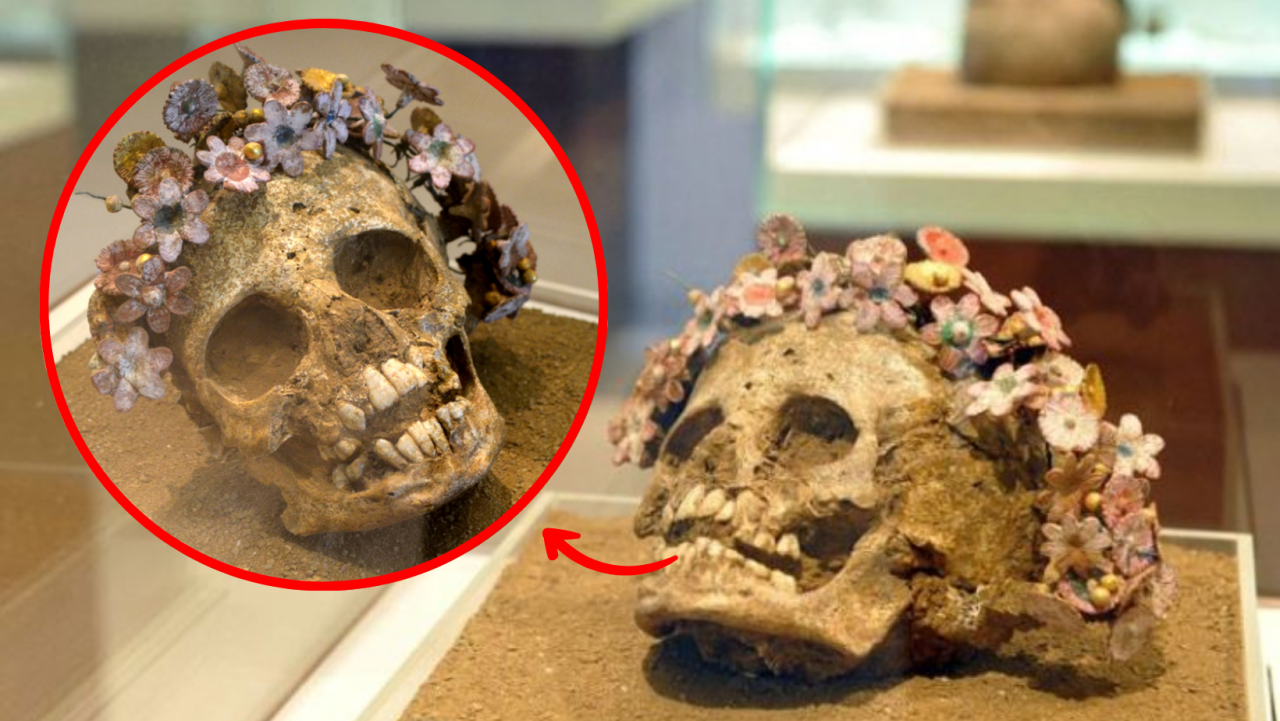
Four crowned skulls of two little girls, and two women, from the North Cemetery in Patras, from the Hellenistic Period.

The first skull bears a wreath of gilded myrtle fruits. The deceased wore golden earrings. (300-275 B.C)
The second skull bears a wreath of fruits and myrtle flowers. The flowers are earthen, some gilded and others in a variety of colors. (late 4th-3rd cent. B.C)
The third skull bears a gilded myrtle wreath, where apart from the leaves, some of the small fruits have survived as well.

The fourth skull is also decorated with a gilded myrtle wreath. The shaft is made of lead and has been also perforated. Gilded bronze leaves and earthen fruits were attached to the small holes.
A detail from the heads of the two little girls. Damages to the skulls might have occurred posthumously.

I have seen many luxurious funerary wreaths, made of gold, with extraordinary craftsmanship, they are a particular trait of the burials of the Hellenistic period, and these burials were of particularly wealthy, aristocrats of the Greek-Macedonian elite, usual families of soldiers ᴀssociated with the campaigns of Alexander the Great. They were discovered either in ornately painted built tombs, under raised mounds, or well-built cist graves, who often would also be decorated with painting.

But these burials of commoners, those wreaths of painted, clay flowers are the most touching of them all. It just shows you the exceptional love and care that existed in those ancient families.





